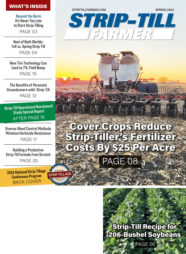Source: University of Illinois
By Michael Gray
A journal article published recently (July 2014) confirms that rotation-resistant and rotation-susceptible western corn rootworms are affected by Bt root tissue in a similar fashion. The citation for this article is provided below.
Tinsley, N.A., J.L. Spencer, R.E. Estes, J.R. Prasifka, P.M. Schrader, B.W. French, and M.E. Gray. 2014. Larval mortality and development for rotation-resistant and rotation-susceptible populations of western corn rootworm on Bt corn. Journal of Applied Entomology. doi: 10.1111/jen.12149
Based upon some earlier research, investigators hypothesized that rotation-resistant western corn rootworm larvae were able to inflict more injury on Bt root systems than rotation-susceptible larvae. In this recent paper the scientists made the following observations refuting this hypothesis: “Rotation-resistant and rotation-susceptible larvae had statistically similar mean levels of mortality and head capsule widths when exposed to both single-toxin (Cry3Bb1 or Cry34/35Ab1) and pyramided (Cry3Bb1+Cry34/34Ab1) Bt corn, suggesting that these two populations do not differ with respect to survival or development when exposed to Bt corn.”
Whether you're concerned about the rotation-resistant or rotation-susceptible population of western corn rootworm, now is the time to evaluate the root protection afforded by your Bt hybrid or planting-time soil insecticide. Signs of potential problems include lodging. However, it’s necessary to dig up lodged plants and wash the soil away from root systems to confirm larval feeding.
Previous research has shown that one node of roots destroyed can equate to a 15% yield loss in some years. It’s definitely well worth your time to accurately assess the value of your corn rootworm protection tool.






Post a comment
Report Abusive Comment